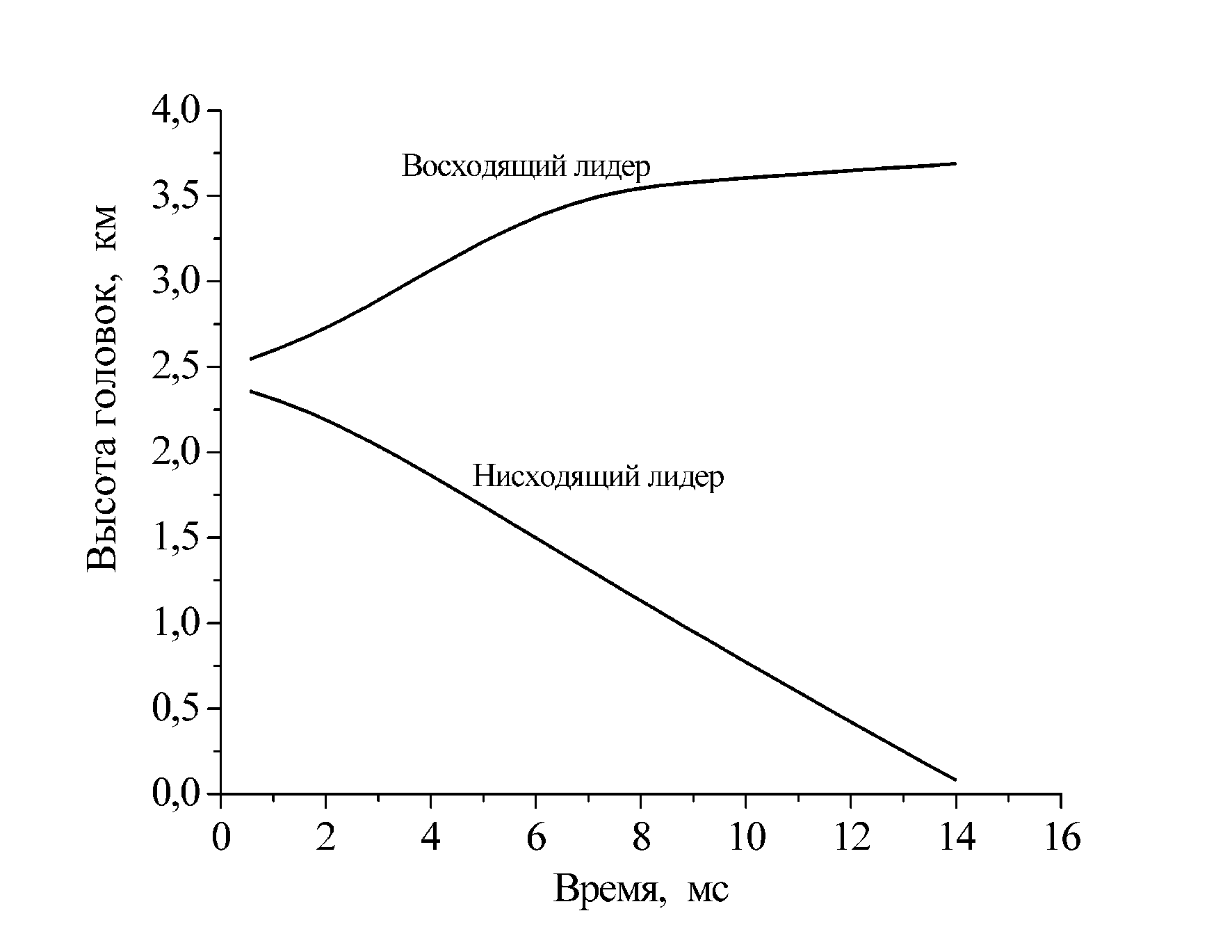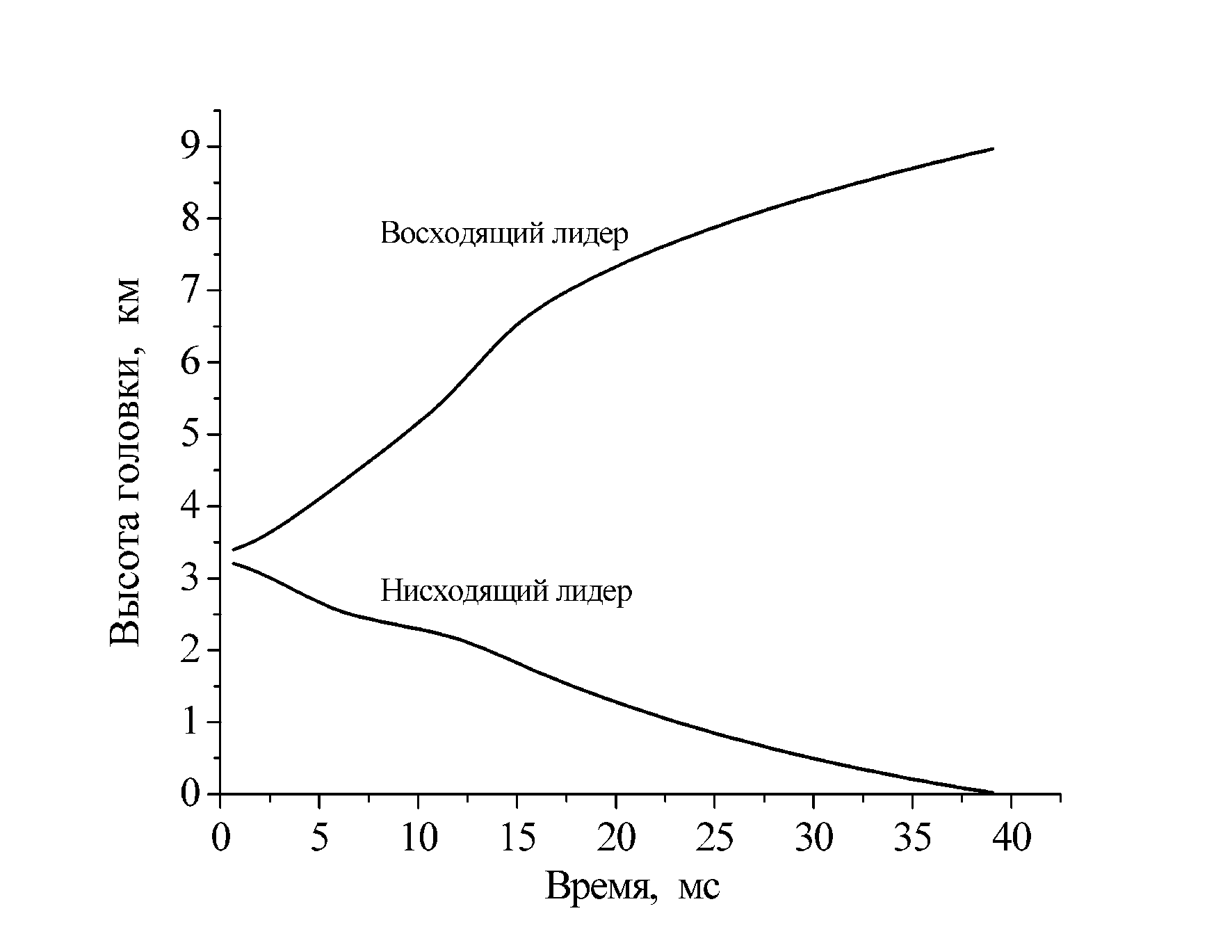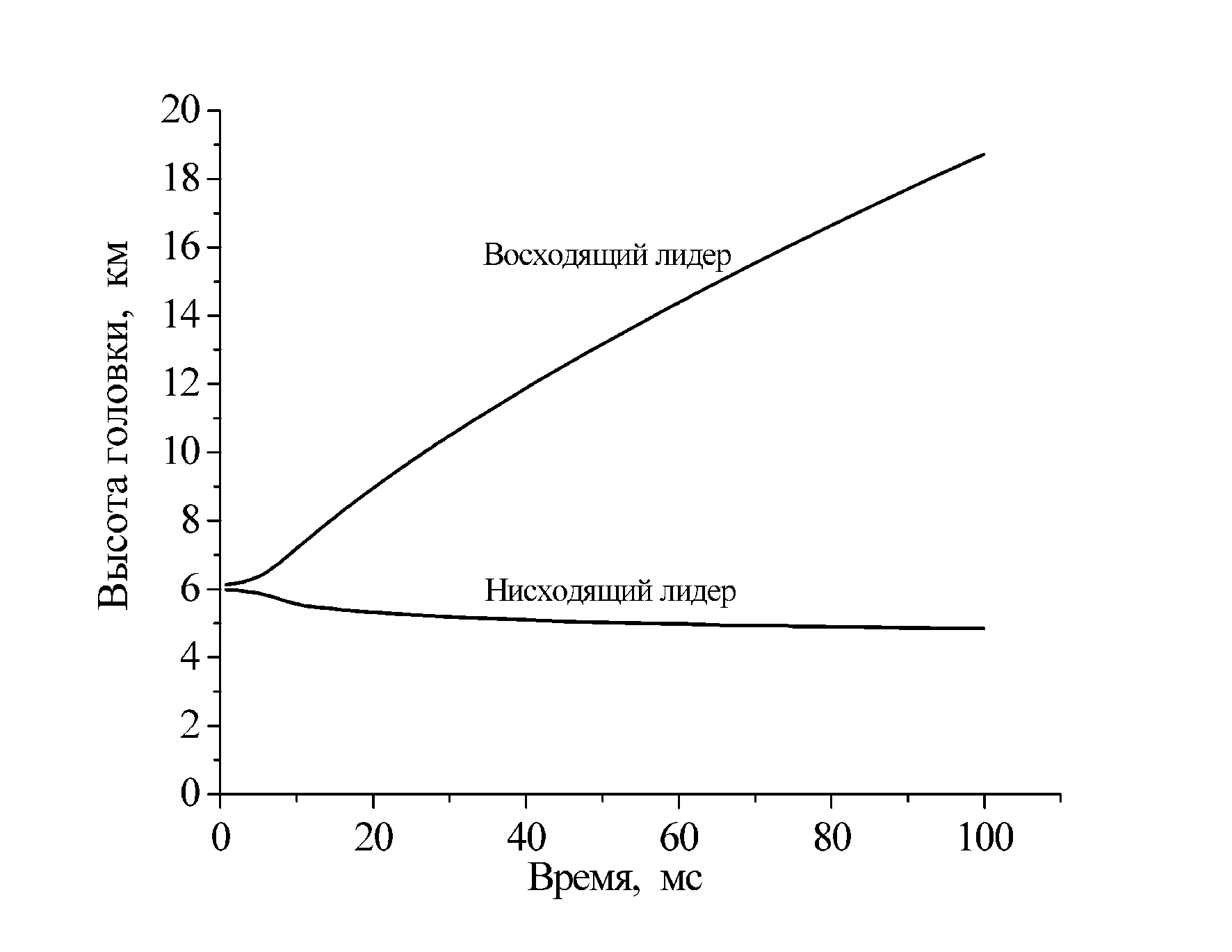From the series of articles "What Is Going On Up There?".
In the calculation example shown in Fig. 2, a potential distribution with the thunderstorm cell charge of 15 C is shown. This is probably an average charge, although it has provided the potential more than 300 MV relative to the ground. The potential is reduced along with the increase of the distance from the thunderstorm cell. At the altitude 20 km, where blue jets, which are the most interesting for the lightning protection, appear, the voltage relative to the earth does not exceed 2.5 MV (a very low value even for laboratory sources), and the field strength is evaluated only as 5 V/cm, which is too low for forming gas-discharge processes in the air with the density being almost 10% of normal. We can do nothing else but link the reason for penetration of a more or less strong electrical field to the upper atmosphere to form a conventional lightning.
Two radically different mechanisms are possible. The first one allows representing a lightning channel as a radiating antenna. After the lightning channel contacts the earth, the so-called main stage of the lightning starts, during which its charge is neutralized. The current of the main stage of several dozens or hundreds of kiloamperes becomes the source of a strong electromagnetic emission, which may improve the electrical field in the distal zone for a short period. For the jets starting from a relatively moderate altitude, the second process is more preferred, i.e. improving the electrical field with a charge that is transported beyond the cloud front with the upward lightning channel.
It was noted above that, in addition to the downward channel, almost at the same time, an upward leader emerges and distributes upward in the location of the lightning start. It may go high beyond the thunderstorm cell. At the qualitative level, such a bipolar process can be subjected to a numerical modelling, and according to existing theoretical ideas, the velocity of the leader channel growth does not depend significantly on the atmospheric air density. The estimates provided below are of a qualitative nature since the computer model does not take into account the voltage drop along the channel. They are made for a dipole model of a uniformly charged thunderstorm cell with the charge of 15 C provided in Fig. 2.

Fig. 7.
The results of computer modelling of a bipolar discharge
started at the altitude of 2,4 km.
Восходящий лидер - Upward leader
Нисходящий лидер - Downward leader
Время, мс - Time, ms
Высота головок, км - Head height, km
Two options are possible. In the first option, the downward leader reaches the ground surface and acquires its zero potential. If, during the process, the upward leader had no time to cross the zero potential zone at the altitude of about 4.5 km, it cannot go up above this level. The computer modelling results demonstrate this situation in Fig. 7. The downward leader starts here from the altitude of 2.4 km and reaches the ground surface in 14 ms, leaving the upward leader at the altitude 3.6 km, below the zero potential zone. Obviously, it cannot markedly strengthen the electrical field at the altitude of several dozens kilometers. Another situation corresponds to the lightning start at the altitude 3.25 km (Fig. 8). From this point, the downward leader was moving to the ground for about 40 ms, which allowed the upward leader to gain the altitude of around 9 km, thus overcoming the zero potential area. Now, nothing can be done to prevent it from moving further up, this way transporting its charge.

Fig. 8
The results of computer modelling of a bipolar discharge
started at the altitude of 3,25 km.
Восходящий лидер - Upward leader
Нисходящий лидер - Downward leader
Время, мс - Time, ms
Высота головок, км - Head height, km
Another picture is typical of the bipolar discharge that has started near the upper positively charged cell. Now, the downward leader cannot overcome the zero potential area. It actually stops moving when it gets down to it. This does not prevent from the upward leader growth (Fig. 9). During 100 ms, in the considered example, its head got up to almost 20 km. This is the altitude that is considered as a location of the blue jet start.

Fig . 9.
The results of computer modelling of a bipolar discharge
started at the altitude of 6 km.
Восходящий лидер - Upward leader
Нисходящий лидер - Downward leader
Время, мс - Time, ms
Высота головок, км - Head height, km
As you can see, the velocity of the upward leader in the performed calculation is reduced weakly over time. This is natural because the calculation model does not take into account the voltage drop in leader channels. If you continue counting up to 500 ms, the head of the upward leader would reach 50 km, thus achieving the length of an average blue jet. It is typical that, in the conditions under consideration, the observer would not see either the lightning strike into the earth or the inter-cloud discharge, because the channel of the downward leader with a weak current stuck in the clouds would hardly be seen in the course of taking photos.
When perceiving the information above, one would like to suppose that the jet is an upward lightning that has come to the upper atmosphere space. Remember that the charge of 15 C in a thunderstorm cell is not a maximum. Much more charged clouds are also possible. The reduced pressure in the upper atmosphere will lead to the reduction in the electrical field in the leader channel, to the increase in its radius, and to a very significant growth in the streamer zone length before the channel head. This can be seen in the optical jet records.
E. M. Bazelyan, Dr. Sc. (Eng.), Professor
Krzhizhanovsky Energy Institute, Moscow
Read further 5. Are jets and sprites really dangerous for modern equipment?
Related Articles:



